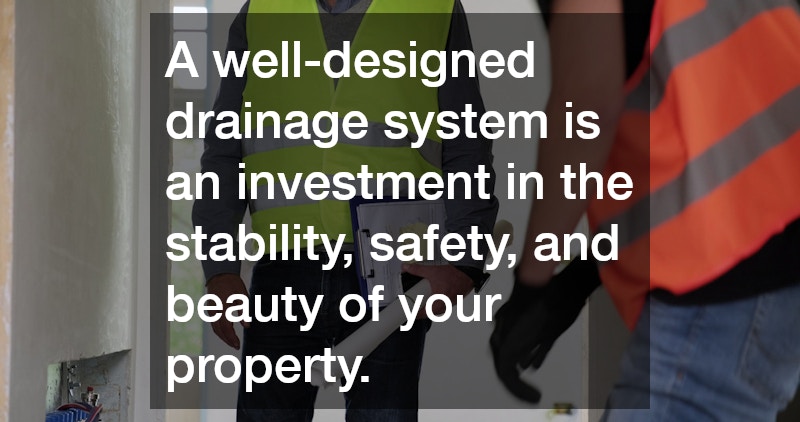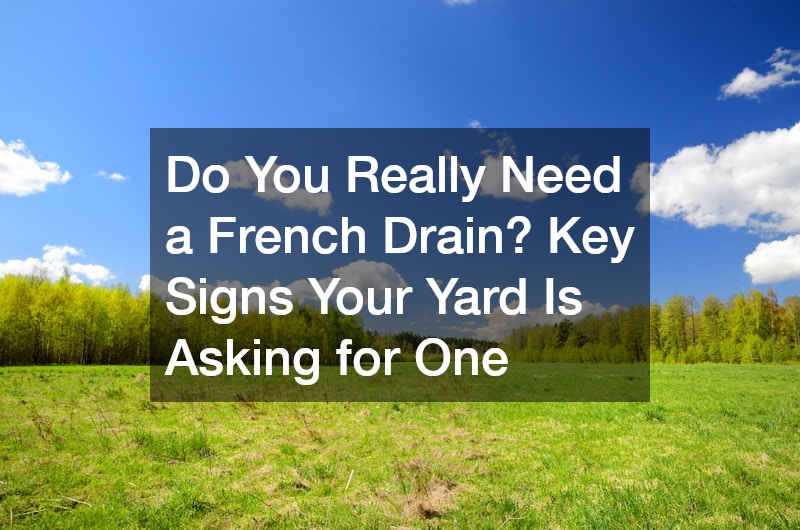Excess water around a home can cause more than minor inconvenience—it can affect your lawn, foundation, and the overall health of your property. While some drainage issues are easy to ignore at first, they tend to worsen over time, creating repair costs that could have been prevented with a simple solution. One of the most effective ways homeowners address chronic water problems is by installing a french drain, a system designed to redirect water away from vulnerable areas. But how do you know if your yard actually needs one? Many homeowners struggle to tell the difference between normal rainfall effects and signs of deeper drainage problems.
Understanding what to look for can save you from costly landscape damage or structural concerns down the line.
Below are the key indicators that your yard may be signaling the need for improved drainage—specifically through a system that provides long-term protection and peace of mind.
1. Persistent Standing Water After Rain
One of the clearest signs of a drainage problem is standing water that lingers long after a rainstorm. A healthy yard should absorb water within a reasonable timeframe, but if puddles sit for days—or worse, become a normal part of the landscape—there’s an issue beneath the surface. Soil that is compacted, clay-heavy, or poorly graded can prevent water from draining efficiently. This standing water doesn’t just look unpleasant; it can attract insects, drown plant roots, and even weaken your home’s foundation if the water gathers close enough.
Homeowners often try quick fixes like adding topsoil or re-sodding, but these are temporary solutions. If water continues pooling in the same places, it means your soil isn’t able to handle drainage on its own. A french drain can reroute this excess moisture, allowing your yard to return to a healthier, more functional condition.
2. Water Seeping Into Your Basement or Crawl Space
When water finds its way indoors, the issue is no longer cosmetic—it’s structural. Moisture creeping into a basement or crawl space often points to poor exterior drainage. As water accumulates around the home’s perimeter, it creates hydrostatic pressure against the foundation walls. Over time, this pressure can push water through tiny cracks or gaps, leading to damp walls, puddles, or even mold growth inside your home.
While interior waterproofing solutions can address symptoms, the best long-term fix is often located outside. Redirecting water before it reaches the foundation is the key to reducing pressure and preventing infiltration. If you’ve noticed musty odors, dampness, or visible moisture in lower levels of your home, it’s likely that your yard isn’t channeling water away properly. Installing a french drain along the exterior perimeter is one way to relieve the pressure and stop the water at its source.
3. Soil Erosion and Landscape Damage
Water that flows too quickly or gathers in the wrong areas can erode soil and damage your landscaping. You might see patches of exposed roots, washed-out mulch, or uneven ground where soil has been displaced. Over time, erosion can undermine walkways, patios, and retaining walls, making outdoor spaces unsafe or unstable.
If your property sits on a slope, drainage problems can become even more obvious. Water naturally follows gravity, carving channels through soft soil and leaving your yard looking patchy or unkept. Erosion is a strong sign that your property needs a controlled drainage system to guide water where it can safely disperse without causing damage. A properly installed drain system keeps water movement consistent, predictable, and controlled.
4. Foundation Cracks or Shifting
Your home’s foundation is one of its most important structural components, and excess moisture can cause serious long-term issues. When water collects around the base of your home, the soil expands, contracts, and shifts with moisture changes. This movement can create cracks in the foundation or cause sections of it to settle unevenly. Even small cracks are signs that water is exerting pressure or altering the soil beneath your home.
If you’ve noticed new cracks or widening ones—especially those located near the bottom of your foundation wall—it may be time to take action. While cracks don’t always guarantee a drainage issue, they often point to ongoing moisture problems that shouldn’t be ignored. A system that captures and redirects groundwater can help relieve the pressure and protect your home from future structural risk.
Water problems rarely resolve themselves, and even minor signs of poor drainage can escalate into major homeowner concerns if left unaddressed. Recognizing standing water, indoor moisture issues, erosion, or foundation movement early on can help you take preventive steps to protect your home and landscape. Installing a french drain is one of the most reliable and effective ways to channel water away from key areas, restore the health of your yard, and prevent long-term damage.
A well-designed drainage system isn’t just an upgrade—it’s an investment in the stability, safety, and beauty of your property. If your yard is sending you warning signs, taking action now can save you time, stress, and costly repairs in the future.

